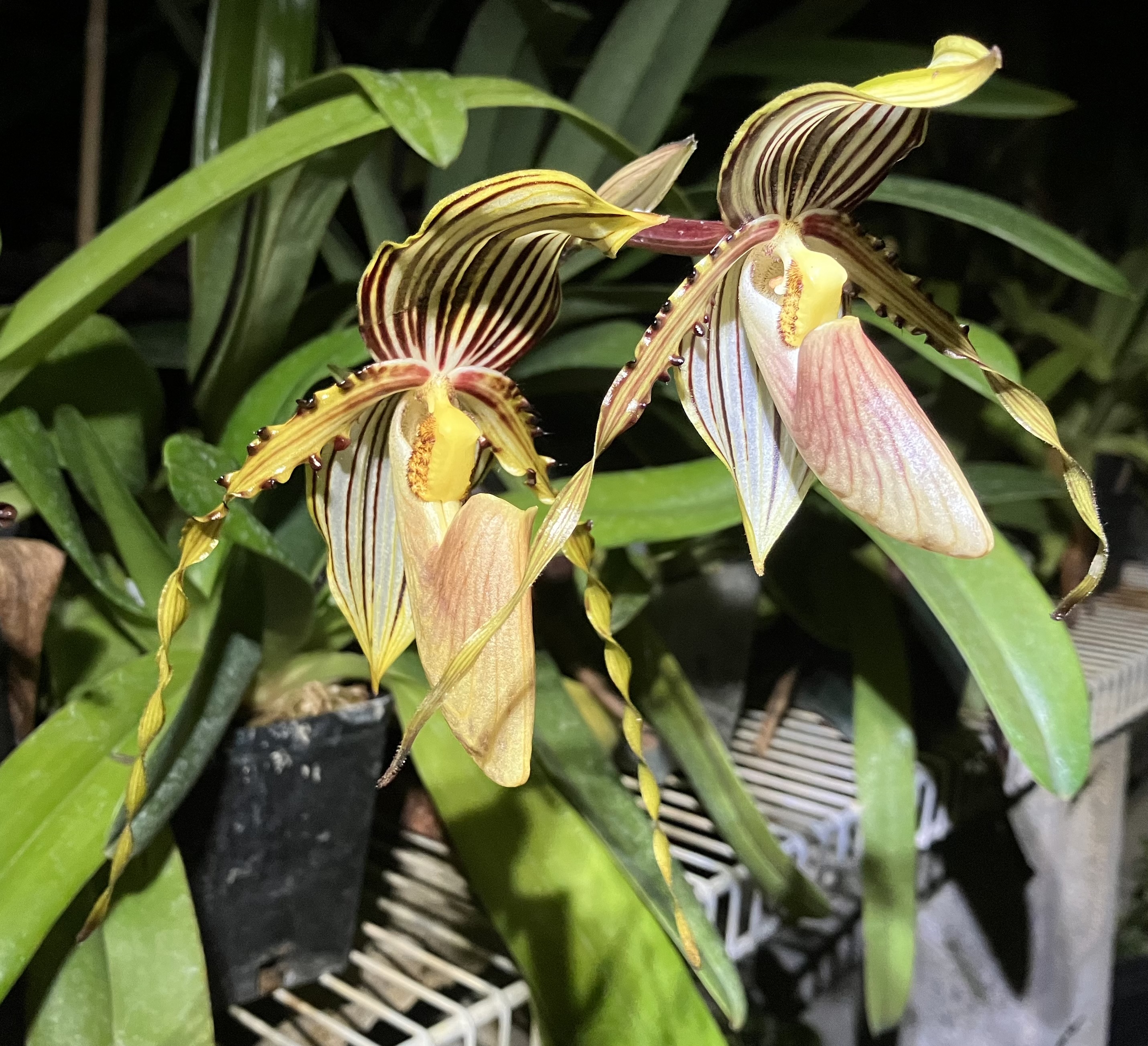
Currently flowering for the first time in my greenhouse is a seedling of Paphiopedilum glanduliferum that I purchased several years ago. My plant came labeled as Paphiopedilum praestans, not P. glanduliferum, and behind those two names lurks the sort of controversy that gets orchid growers all hot and bothered and spawns fiery internet arguments. In a nutshell: descriptions of new orchid species are generally based on a limited number of specimens which may not represent all of the significant variation present in wild populations. Furthermore, herbarium specimens get lost, damaged, mislabeled, etc., and information in older descriptions may not be complete or fully accurate. Consequently, it’s not uncommon for the same orchid species to be described twice or, alternatively, plants considered to be the same species may actually be distinct.
So, two small, fairly similar slipper orchid species from New Guinea were described, Paphiopedilum glanduliferum in 1892 and Paphiopedilum praestans in 1894. Plants matching P. glanduliferum have not been seen since the original description, while P. praestans has been collected many times and is reasonably common in cultivation. There are basically two explanations for this state of affairs: either P. glanduliferum is very rare, possibly even extinct, or both names refer to a single variable species. The latter viewpoint is reflected in Plants of the World Online from the Royal Botanic Gardens Kew which considers P. praestans a later synonym of P. glanduliferum. The former has been argued by some well-known botanists and orchidists, and there’s a general tendency for orchid growers to prefer splitting over lumping–it gives us more plants to collect.
For now, I’m labeling my seedling P. glanduliferum, but the original nursery tag bearing the label “Paph. praestans” is buried in the pot where it won’t get lost. In any case, this is a tidy, compact plant with a relatively short inflorescence, not as spectacular as the large multifloral species, but probably a good choice for a bright windowsill or light garden with limited space.

Gorgeous.
LikeLiked by 1 person